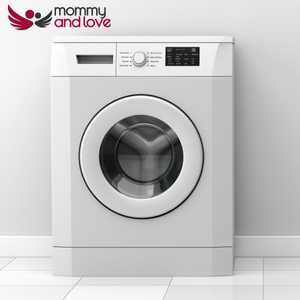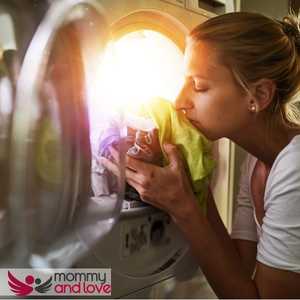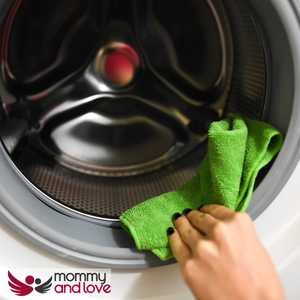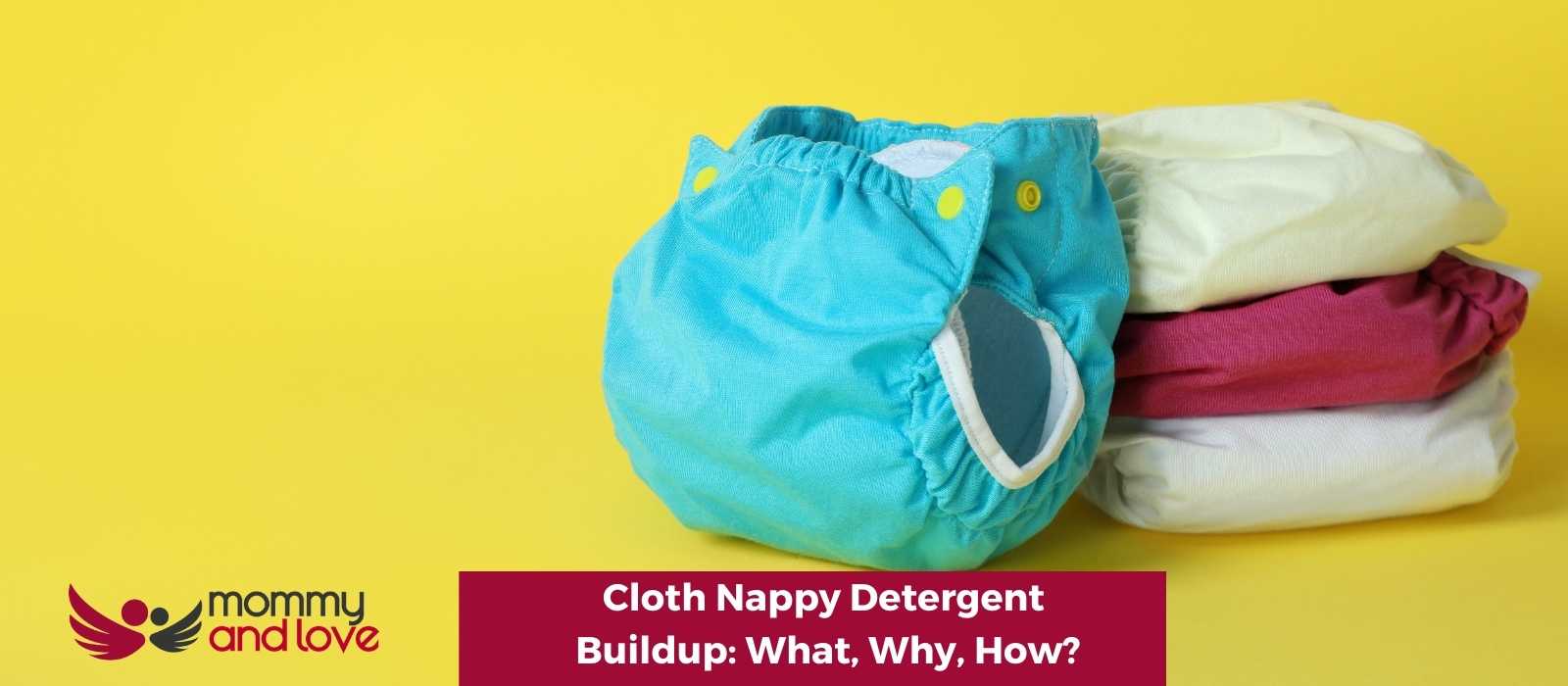Cloth nappy detergent buildup or powder residue is a common problem faced by many people who use cloth nappies. Detergent buildup can cause your nappies to smell, leak, be less absorbent and potentially cause nappy rash. If you are wondering what the best way to get rid of this problem is, then keep reading!
What is detergent build-up in Nappies?
Detergent Buildup is a common problem in cloth nappies and even in clothes, but generally, in clothes, it does not cause any issues. This happens when too much soap residue remains on the fabric after washing, which leads to your nappies not being as absorbent and smelling bad. Whether you call this build-up or powder residue, is semantics. What we are talking about is leftover powder in your fabrics after the final rinse.
Some people claim it’s a myth and doesn’t really happen, and if there is a residue of washing powder or detergent in your nappy it’s not a big deal. Having helped literally thousands of parents with cloth nappy issues over the last 10 years, I can report it’s not a myth!
What causes washing powder residue?

Quite simply, the powder is not being rinsed out sufficiently and indeed some powders are designed to leave their scented smells and not be rinsed out.
There are three main reasons for washing powder residue.
- Modern washing machines (generally in the UK we just have ‘front loaders’) tend to be super-efficient both in terms of energy and water usage. Whilst this is great for the environment, reducing water in a rinse can cause issues for cloth nappies.
- It can also be caused by using too much powder, but rest assured I’m not going to tell you to cut down on your powder usage. It’s important to thoroughly clean your nappies and this depends on your machine, your water and your load size and how dirty your load is. Always use the recommended amount to ensure your nappies are thoroughly clean. Read our full guide on cleaning washable nappies here.
- Your machine is dirty and needs maintenance wash. These should be done frequently (read your washing machine instructions on exactly how often).
What will detergent build up in nappies do?
Having too much detergent or detergent residue or buildup on your nappies can cause a lot of issues. Firstly, when urine hits the nappy with powder in it, this can cause a reaction, rash or irritation on your child. I often hear people say their children were allergic to cloth nappies, but in reality, they were allergic to the washing powder residue.
Washing powder rash can cause intense itchiness and discomfort in your child’s nappy area. This is the redness you often see.
It can also lead to leaks, as the powder residue is not allowing the nappies absorbency to work properly. This is the main issue people using have when they have too much washing powder residue on their nappies. The residue blocks the ‘holes’ in the fabric and stops it from absorbing. When fabrics stop absorbing the wet has to go somewhere and usually this means leaking occurs. It will be less effective at keeping accidents inside and causing you problems (such as soaking sheets or clothes when a small amount of urine escapes).
Another issue with washing powder residue on nappies is the smell it causes. When urine reacts to washing powder you can get an intense ‘foul’ smell.
How do I know if I have washing powder residue?
There are three main tests to tell if you have washing powder residue. The swoosh test, the rinse test and the good old fashioned sniff test.

The Swoosh Nappy Powder Test
The swoosh test is simply putting hot water inside a clear bowl (it’s important that the bowl is clear) and checking for residue. Here are three simple steps to do it:
- Fill the bowl first with hot water (not boiling hot but as hot as your hands can take.
- Take a clean nappy or booster (not an outer wrap a nappy with an absorbent bit). Put it into the bowl and ‘swoosh’ it about for a minute.
- Wring the nappy out a few times then remove it from the water.
- Check your water, is it still lovely and clear? Or can you see residue scum, bubbles or cloudiness? If you can see any residue in the water you have residue on your nappies.
The Final Rinse Test
This is simply checking your washing machine (if a front loader rather than a top loader) at the end of the washing. Here is the simple guide:
- Wash your nappies as you would normally do.
- At the end of the wash cycle, do an extra rinse cycle.
- Check the window of the washing machine and check for any bubbles in the water or cloudiness.
- If you can see bubbles in this rinse you have washing powder residue remaining in your nappies.
The Simple Smell Test

Whilst this sounds the simplest to do, it can actually be quite hard for many people as I think they just become ‘immune to the smell of their washing powder.
The number of times we have had ‘leaking’ nappies returned to us definitely did not have ‘residue’ on them which ‘ponged’ of residue.
And I mean ponged like we could smell the washing powder through the postal bag!
This is a really simple test. When your nappies are dry smell them. They should smell of nothing! Simply nothing. If you can smell ‘laundry fresh’ scents and synthetic scents you have washing powder residue on your nappies. If they smell dirty, smelly, of urine or poop that’s a different issue which we discuss here.
How much washing powder should I use?
What is the right amount of detergent for my load?
The correct amount of detergent to use depends on various factors, including:
• The size and type of your washing machine.
• Load size (number/weight) – you only need enough laundry soap to clean that load; but not more than recommended by the manufacturer.
• Type of water, hard or soft – if you have very hard water it may require more detergent than those with softer water to get the same cleaning results.
• Amount and type of soil in your laundry load (clothes that are heavily soiled might need additional powder).
• Temperature settings on your machine.
• Detergent type and if you’re using a fabric softener in the same wash cycle, more detergent might be needed to get your nappies clean.
How to get rid of Cloth Diaper Washing Powder Residue/Buildup?

First things first, don’t cut down your nappy powder amount. It’s vital that you put enough in to actually clean your nappies.
Some people cut down so much to avoid residue build-up that they end up with dirty, unhygienic nappies.
- Do a maintenance wash! I cannot stress how important it is to keep your machine clean! Read our guide on maintenance washes for washing machines here if you are unsure how to do this process.
- You could try a different powder or try switching to bio powder if using non-bio. Read our guide to bio vs non-bio powder here.
- Try using a hotter wash. If you are washing at 30 or 40 it might not be enough to break down the powder, so try switching to 60 and see if this improves your residue issues.
- Do the heavy towel trick. If you put a towel soaked with water into your machine with your nappies it tricks ‘modern’ efficient machines into thinking its a heavier load. The benefit of this is that your machine will use more water to rinse out the nappies when it comes to the rinse cycles, and this is often the cause of residue.
- Put your nappies on an extra short cycle or rinse cycle with NO powder AFTER you have done your normal long cycle nappy wash. I always did this and generally found this was the best method to ensure no residue issues.
If putting the above steps into your cloth nappy washing routine fails to remove the residue then you might have to take it to the next level and do a full nappy strip wash. This method should not be needed that often, and really a few small adjustments to your wash routine should fix any small residue issues.
Does vinegar remove detergent build up?
This is a myth that I have heard many people say vinegar can remove nappy residue, but in my experience, it does not. Vinegar should only be added to your wash routine if you are using non-bio washing powder and want the benefits of fabric softener or need to help prevent hard water stains (calcium build-up) on your clothes or nappies. In terms of removing detergent, residue vinegar does nothing, but you can add a small amount to your wash routine if needed for its softening capabilities. It can also help with cleaning your machine.
Take Away
If you have detergent buildup in your cloth nappies, there are some things that you can try. You should never cut down the amount of laundry soap that you use because it is vital for cleaning dirty nappies properly. Instead, read our guide on maintenance washes and see if this doesn’t fix any residue issues with your machine or clothes. If not, then maybe using a different type of washing powder will help or try bio-friendly powders so long as they work well with your water quality. There are also tricks like adding a towel soaked in hot water to create more suds when rinsing out soiled fabrics which help get rid of residues left behind, and if all else fails you can do a full nappy strip wash to remove any detergent build-up and just adjust your wash routine going forward.

This article was written by: Gian MIller – Full-Time Writer, Baby Whisperer & Dad of 3.
Gian spends a lot of his time writing. A self-proclaimed baby whisperer, Gian has been through it all with his own children and is passionate about sharing his hard-won wisdom with other parents. When he’s not writing or changing diapers, you can find him playing the guitar or watching baseball (or preferably both at the same time).




